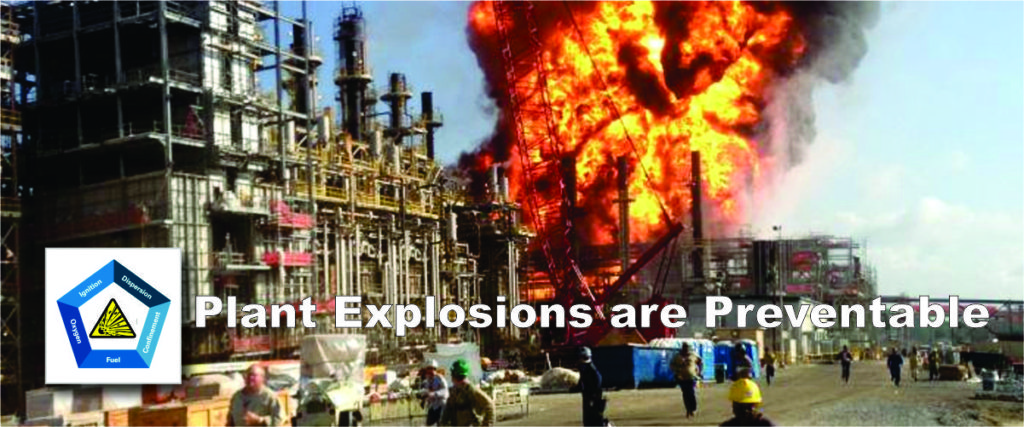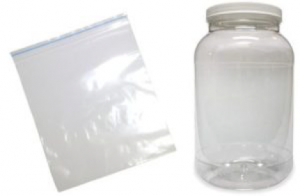Prevent Dust Explosions
First Steps in Explosion Protection is to Understand the Nature of the Dust You Are Dealing With
AST Engineering is able to determine, based on your dust sample, if the application involve any potential fire or explosion risks.

Combustible Dust Hazard Assessment Testing
The series of tests below will determine the explosivity and flammability of dust collected in your facility. Once testing is complete an explosion mitigation plan can be put in place, if necessary.
What is a Go/No-Go Test?
The concept of a Go/No-Go test is used in many industries and applications from testing safety guideline parameters, as in combustible dust, to decision making in corporate settings. The basic concept is a pass/fail within 2 parameters or boundary conditions. The test is satisfied if and only if the “Go” condition is met and the “No-Go” condition is not.
How Go/No-Go Tests Relate to Combustible Dust?
The Go/No-Go Test is the first step in screening for the possibility of dust explosibility in your facility. Based on ASTM E1226, “Standard Test Method for Explosibility of Dust Clouds”, this test is an abbreviated set explosion severity method with three dust concentrations to determine if the sample is explosible. The test is done on a dust sample size of 100 grams sieved to 420μm using one 5-kJ chemical igniter as the ignition source.
Samples Tested “As Received”
It is worth noting that this test is generally performed with samples “as received” or sieved with a 40 mesh (420μm) screen. So it is important that samples are collected and transported correctly with the proper paperwork attached.
Go/No-Go Test Results
View the Go/No-Go Test Results Roadmap
If Test Results Indicate: “Yes, it explodes”
If your test sample is a “Yes, it explodes” then further tests can be run to determine how quickly and how severe the explosion will be (KSt/Pmax Test), followed by testing what concentration of dust in the air will cause a risk of explosion (MEC Test). Next, another test can determine if a spark will cause an explosion (MIE test).
Learn More About Further Combustible Dust Testing
If Test Results Indicate: “No”
If your Go/No-Go test result is a “no” we next look at what temperature it will take to make your dust layer ignite. To find the Minimum Auto-ignition Temperature (MIT) of a dust cloud in the air, the MIT tests the minimum temperature that would cause your dust cloud to ignite. Also the LIT Test is performed, which determines the hot-surface ignition temperature of a dust layer. Finally, a Burn Rate test is conducted to determine how quickly the dust material will burn.
All of these tests start with the Go/No-Go Test. A comprehensive Dust Hazard Analysis (DHA), can apply your test results to real world scenarios at your facility to determine what you are dealing with so you can plan safely!
Further Testing & Dust Hazard Analysis
Understanding DHA Terminology
Testing your plant or manufacturing facility for possible hazardous dust or combustible dust will seem perplexing until you understand simple terminology outlined by OSHA, NFPA and other regulating authorities. See the names of the tests, their purpose and definitions below.
Risk Analysis of Hazardous Dust
When developing mitigation strategies for potentially hazardous, explosive or combustible dusts, it is important to characterize the hazard risk of the material in question by determining its explosion severity and ignition sensitivity.
Explosion severity data will determine if an explosion hazard exists and, if so, how energetic it may be while ignition sensitivity data will assess the probability of risk based on how the material responds to heat, spark, impact and frictional forces.
Air Separation Technologies, Inc. offers the following NFPA Combustible Dust Hazard Assessment (DHA) testing and services for determination of both explosion severity and ignition sensitivity per ASTM and European EN methods:
Explosion Severity Test – (KSt ,PMax and dP/dtMax)
ASTME 1226 – 2010 – Determines values necessary for designing protective measures, such as deflagration venting
EN14034 – Part 1:2004 – Determination of the Maximum Explosion Pressure (Pmax) of Dust Clouds – Part 2:2006 – Determination of the Maximum Rate of Explosion Pressure Rise (dP/dtMax ) of Dust Clouds
Minimum Ignition Energy – (MIE)
ASTM E2019 – Standard Test Method for Minimum Ignition Energy of a Dust Cloud in Air
EN13821:2002 – Potentially Explosive Atmospheres – Explosive Prevention and Protection – Determination of Minimum Ignition Energy of Dust/Air Mixtures
Minimum Explosible Concentration – (MEC)
ASTM E1515 – Identifies the Minimum Hazardous Concentration of a Dust Cloud that will Sustain Combustion
EN14034-3:2006 – Determination of Explosion Characteristics of Dust Clouds – Part 3: Determination of the Lower Explosion Limit (LEL) of Dust Clouds
Minimum Autoignition Temperature of a Dust Cloud – (MIT)
ASTM E1491 – Determines Safe Operating Temperatures at Which a Dust Cloud Will Not Autoignite
EN50281-2-1:1999 – Electrical Apparatus for Use in the Presence of Combustible Dust – Part 2-1: Test Methods – Methods for Determining the Minimum Ignition Temperatures of Dust
Hot Surface Ignition Temperature of Dust Layers – (LIT)
ASTM E2021 – Identifies Dangerous Operating Temperatures at Which a Dust Layer Will Self-Heat
EN50281-2:1999 – Electrical Apparatus for Use in the Presence of Combustible Dust – Part 2-1: Test Methods – Methods for Determining the Minimum Ignition Temperatures of Dust
Limiting Oxygen Concentration – (LOC)
Defines Safe Nitrogen Inerting Levels to Prevent Dust Cloud Explosion
EN14034-4:2004 – Determination of Explosion Characteristics of Dust Clouds – Part 4: Determination of the Limiting Oxygen Concentration LOC of Dust Clouds
Important Notes about Dust Samples
Your sample may be screened to less than 420 μm (40 mesh) to comply with OSHA’s and NFPA’s demarcation of a dust and to facilitate dispersion into a dust cloud. Particle size may vary widely depending on the sample. Please note also that per ASTM recommendations (and some NPFA requirements); samples should be tested at a particle size less than 75 μm and less than 5% moisture.
Please note that testing materials in a method not compliant with the ASTM/EU recommendations may produce explosion severity and explosion sensitivity data that is not considered conservative enough for explosion mitigation design.
How to Collect Dust Samples?
 Dust samples should be collected in a container that can be sealed tightly, like a zip-lock bag or plastic container with a tight sealing lid.
Dust samples should be collected in a container that can be sealed tightly, like a zip-lock bag or plastic container with a tight sealing lid.
Use a natural bristle brush to collect the samples. If you suspect you may have an electrostatically charged dust, collect the sample by using a plastic coated shovel or scoop.
Where to Collect Dust Samples?
The best place to collect a dust sample is inside your dust collector filter. You can also collect samples from the bin under your dust collector.
If you do not have a dust collector other good places to collect your sample is high up in your facility from the top of beams, light fixtures and any flat surface high up away from traffic where dust collects.
How Much Dust Needs to be Collected?
Your dust sample needs to weigh between 1lbs. to 2lbs.(500g to 1Kg), after subtracting the container weight, for proper testing.
How to Pack Dust Sample for Shipping
- Ensure your sample is large enough – 1 to 2 lbs, (500g to 1Kg)
- Fill out the Sample Form, use a descriptive name on the form, this name will be used on the report sent back to you.
- Provide any special instructions
- Include MSDS sheet for the material
- Fill out the options form for the testing
- Place all forms and sample in box for transportation. Pack the sample to ensure minimal movement inside the box during transportation.
